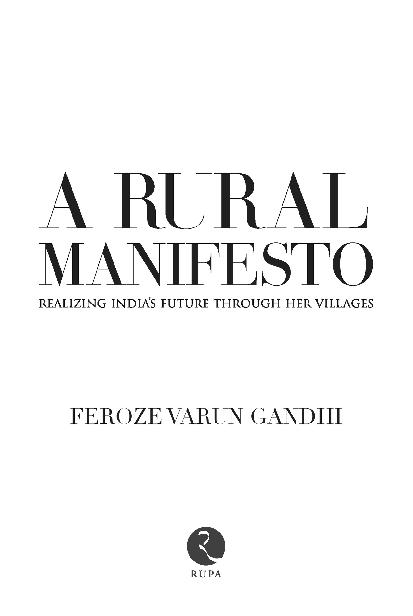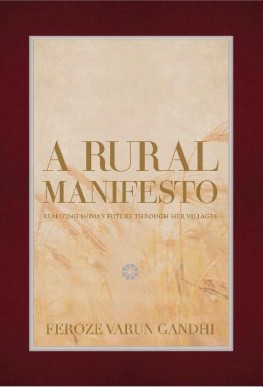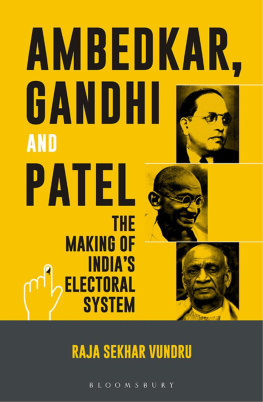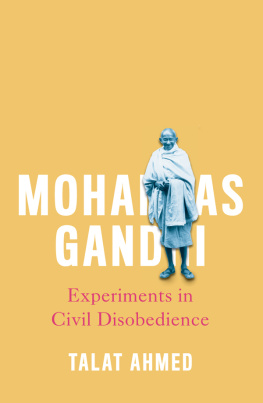Published by
Rupa Publications India Pvt. Ltd 2018
7/16, Ansari Road, Daryaganj
New Delhi 110002
Copyright Feroze Varun Gandhi 2018
The views and opinions expressed in this book are the authorsown and the facts are as reported by him which have been verified to theextent possible, and the publishers are not in any way liable for the same.
All rights reserved.
No part of this publication may be reproduced, transmitted,or stored in a retrieval system, in any form or by any means,electronic, mechanical, photocopying, recording or otherwise,without the prior permission of the publisher.
ISBN: 978-81-291-XXXX-X
First impression 2018
10 9 8 7 6 5 4 3 2 1
Book designed by Yamini Gandhi, Incarnations
This book is sold subject to the condition that it shall not, by way oftrade or otherwise, be lent, resold, hired out, or otherwise circulated,without the publishers prior consent, in any form of bindingor cover other than that in which it is published.
In tribute to Indias marginal farmer
whose daily toil is as much an act of
defiance as an article of faith.
CONTENTS
C HAPTER I
O N A GRICULTURAL I NPUTS
C HAPTER II
O N W ATER A VAILABILITY
C HAPTER III
O N E NERGY A CCESS
C HAPTER IV
O N A GRICULTURAL M ARKETING
C HAPTER V
O N N ON -F ARM I NCOME
C HAPTER VI
O N H ANDICRAFTS
C HAPTER VII
O N R URAL L ABOUR
C HAPTER VIII
O N R URAL E DUCATION
C HAPTER IX
O N R URAL H EALTHCARE
C HAPTER X
O N R URAL C REDIT
C HAPTER XI
A W AY F ORWARD
PREFACE
The idea of writing a tome, nay, a dense synthesis of facts, forecasts and, at times, personal anecdotes, came from my travels in Indias dusty hinterland. Whether it was campaigning in the deltaic regions of West Bengal, conducting field visits in the vicinity of Sultanpur and Pilibhit, or more simply, meeting students of provincial universities in states often forgotten by national media, the cause of marginal farmers and their current dismal condition struck in a chord with me. This issue, once proudly espoused by all up-and-coming politicians, was at once an intellectual and emotional problem, and one with no easy solutions.
Farmers in Champaran district in Bihar, a century back, under the Tinkathia system, were forced to set aside 15 per cent of their land for the cultivation of indigo. Even after these were planted, the farmers were still subject to a variety of extortionist cesses, termed abwabseven the cost of an elephant for colonial shikaar was included. Farmers naturally rose in resistance in the thousands, but were crushed by the East India Company until the arrival of a barrister from South Africa, who fought for the cause of the harassed tillers of the soil. And yet, a century after the Mahatma sought freedom from exploitation for them, Indias farmers remain a beleaguered lot.
In Majuli district of Assam, farmers are increasingly taking to eating beetles, as a way of beating back pests from their marginal farms. Meanwhile, in Maharashtra, onion farmers routinely see over 20 per cent of their produce wasting due to lack of cold storage facilities. Consider the landscape that Indias farmers survive in. The countrys heat-baked plains are criss-crossed by a range of turbulent rivers, many worshipped and dreaded since prehistory. Such rivers have repeatedly altered course, changing the way they deposit sediment during the monsoons, and overrunning ancestral fields. Even major distributaries would end up getting divertedconsider the case of the Bhagirathi in West Bengal, whence the main course of the Ganga shifted eastwards towards the Padma; and post the floods of 1770, even the Damodar witnessed a change of confluence point. For Indias farmers, agricultural risk has been ever-present. They have to take a variety of decisions, right from choice of crops (annual or short-term) to time of tillage. The challenge is further exacerbated by rising prices of agricultural inputs, availability of water, soil suitability and pest management. All these decisions and uncertainties narrow the window of economic benefit for the marginal farmer. A faulty decision can wreak significant havoc. The viability of being a marginal farmer is further eroded due to macro developments.
This uncertainty is reflected in rural debt levels. Large farmers (>10 hectares) in Punjab typically have a debt-to-income ratio of 0.26, while medium farmers (410 hectares) and semi-medium farmers (24 hectares) have a debt-to-income ratio of 0.34all seemingly affordable. However, small (12 hectares) and marginal farmers (<1 hectare) face a greater burden of debt, with a debt-to-income ratio of 0.94 and 1.42, respectively, with over 50 per cent of their loans from non-banking sources.
With the average landholding size decreasing (from 2.3 hectares in 1971 to 1.16 hectares in 2011) and average input prices rising, the cost of cultivation has increased, and with it margins associated with farming have reduced. Media reports highlight that a farmer can now typically earn between 2,4002,600 per hectare, tilling fields of paddy or wheat, while farm labourers can earn less than 5000 per month. Real farm wages have grown at an average annual growth rate of 2.9 per cent between 1991 and 2012, with farm wages actually declining between 2002 and 2007. About 30.5 million peasants quit farming over 200405 and 201011, seeking employment in the secondary and tertiary sectors. The size of this agricultural workforce is expected to shrink to ~200 million by 2020. When we talk of rural distress, these are some of its symptoms.
Minimum support prices have also declined. Food inflation has declined significantly over the past year, with the price of arhar down by 45 per cent in April 2017 compared to the previous year, while the price of urad has declined by 29 per cent. Meanwhile, the average growth in minimum support prices of kharif crops has been ~4 per cent, compared to the ~1315 per cent growth seen between 2010 and 2013.
The dismal consequence isacutely depressed farmers committing suicide. Officially, around 12,602 individuals associated with the farm sector committed suicide in 2015, about 2 per cent more than 2014. Farmer suicides have increased primarily in states with limited irrigation and variable rainfall (e.g. Maharashtra, Karnataka, Telangana, Chhattisgarh, Andhra Pradesh, Tamil Nadu and Madhya Pradesh), which contribute 87.5 per cent of total farmer suicides in 2015. Over 321,428 farmers have committed suicide in the past twenty years.
Indias agricultural strategy has historically sought to raise productivity (through high-yield varieties) while seeking to keep input costs low (through fertilizer subsidies and seed grants), and attempting to guarantee a minimum return (through minimum support prices). Meanwhile, consumers were provided cheap food through the public distribution system. However, this strategy has outgrown its utilityIndias agricultural inputs market is increasingly deregulated, with subsidies for fertilizers being cut. Public investment in irrigation, flood control and high-yielding varieties has been affected by a shift towards lessening the fiscal deficit. Liberalized imports of agricultural commodities have also done their bit to dampen domestic prices. The viability of being a marginal farmer in India has been eroded. Meanwhile, governments have sought to address production shortfalls and rising food inflation in urban markets by liberalizing imports and releasing buffer stocks into the market, further reducing prices. Thus, even in good harvest years, farmers end up with low minimum support prices and limited procurement of their produce. So, Indias agriculture sector is increasingly exposed to market signals that it hasnt been prepared for.















